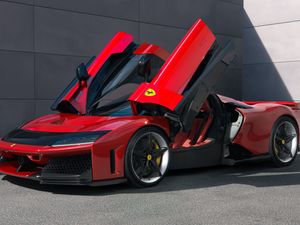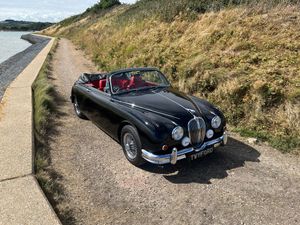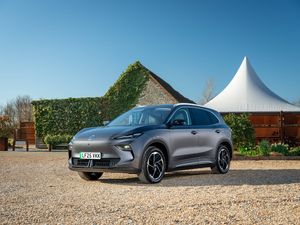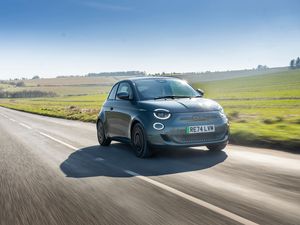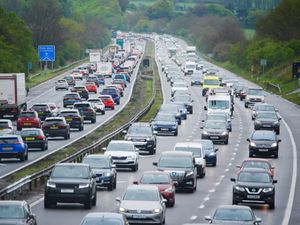UK Drive: Is Volkswagen’s Transporter still a do-it-all contender?
Volkswagen has replaced its much-loved Transporter van, but can it live up to the legend? Jon Reay finds out
What is it?
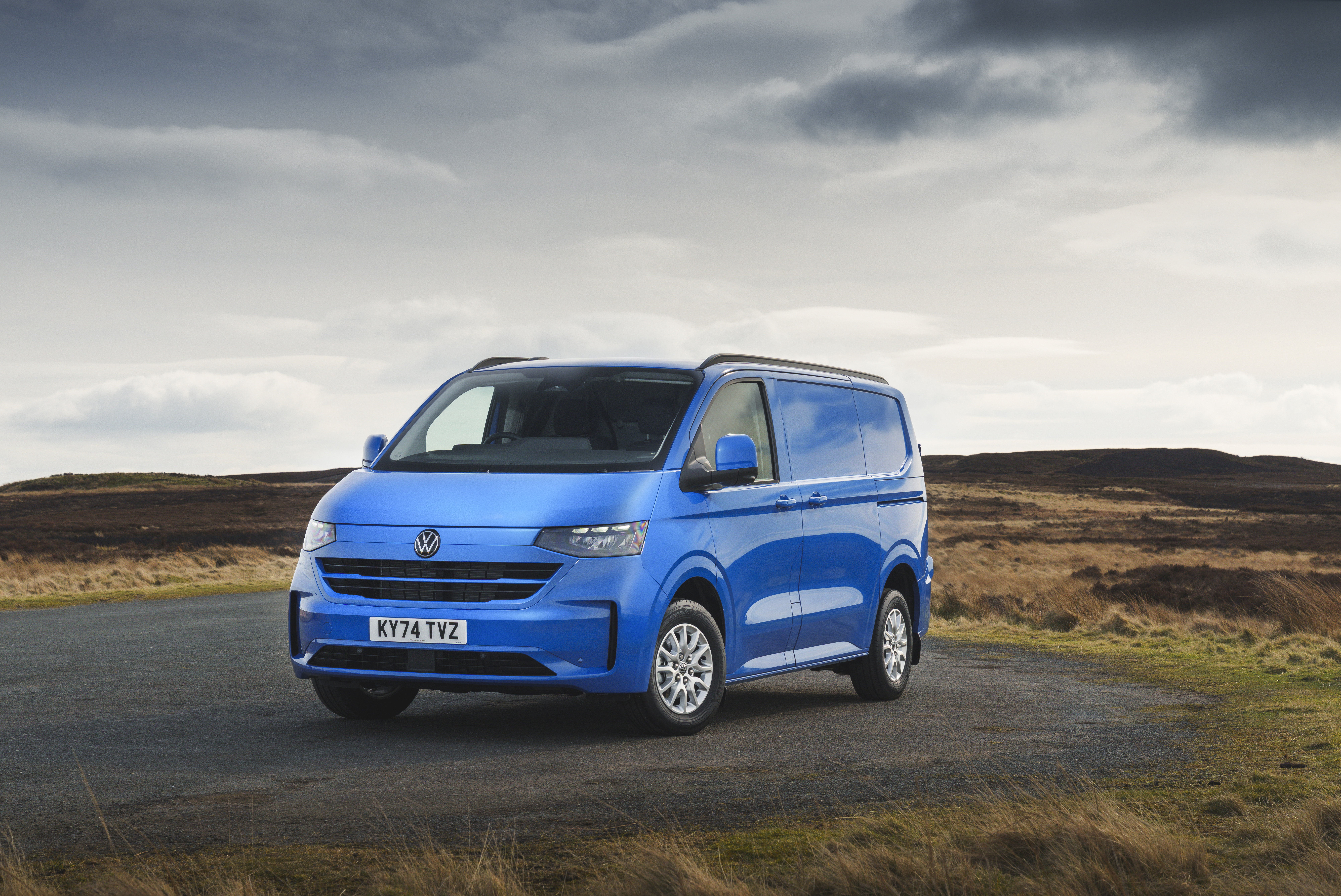
If ever a van arrived carrying a heavy weight on its shoulders, it’s this one. The Volkswagen Transporter can trace its origins all the way back to the 1950s and the original ‘bus’ – probably the most recognisable van of all time.The last generation had quite a fan club too – and not just with tradespeople. You won’t get far in the UK without stumbling across one, either lovingly modified into a posh camper, or being used to haul kids, mountain bikes and dogs around instead of an SUV.
But a staggering 23 years after the familiar T5 and T6 shape first appeared, VW reckons it’s time for a change of recipe. The question is, can this new model live up to its predecessor?
What’s new?

In a word, everything. There’s not a single shared part between this and the old T6 – which is incredible when you consider how little the Transporter had actually changed since 2003. There is a reason for that, mind: this generation has been developed with a little help from Ford.More than a little help, in fact: it’s not hard to spot that it’s the Blue Oval’s engineers who’ve won most of the design arguments here, and the Transporter is even built by Ford at its Transit factory in Turkey.
Anyway, there’s a new platform, new engines, new interior, and plenty of new technology too. It’s also grown in size considerably compared to the T6, which was starting to feel a little pokey in the cabin compared to its rivals.
What’s under the bonnet?
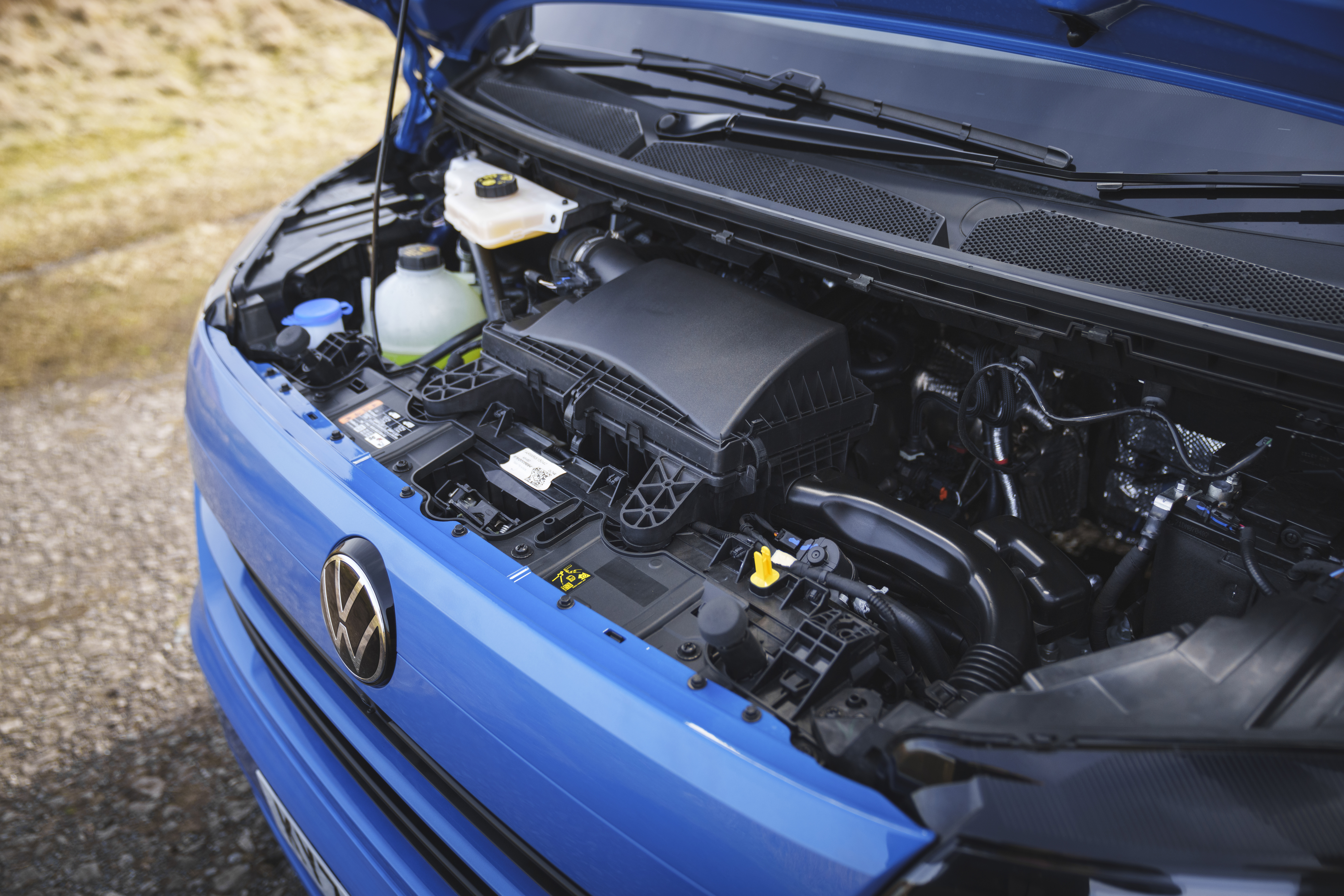
For now there’s a trio of 2.0-litre diesel engines – ranging from 108bhp to 167bhp – available with either front or all-wheel drive. A petrol plug-in hybrid version is also on the way, borrowing the same setup as the Transit PHEV that’s already on sale, and there’s a fully-electric e-Transporter on offer too.Our particular van has the mid-range 147bhp diesel option, paired with an eight-speed automatic gearbox. As a combo, they make for an incredibly easy van to drive, either around town or on longer motorway shleps.
It’s also reasonably efficient for something of this size: we managed not far off the 36.7mpg WLTP figure after a mix of motorway and town driving.
However, this new Ford-derived gearbox won’t be winning over any diehard Volkswagen DSG fans. It’s simply not as smooth, nor as quick, to change between its ratios as the automatic in the last generation model. But it does the job, and this is a van after all, not a Golf R.
What’s it like to drive?
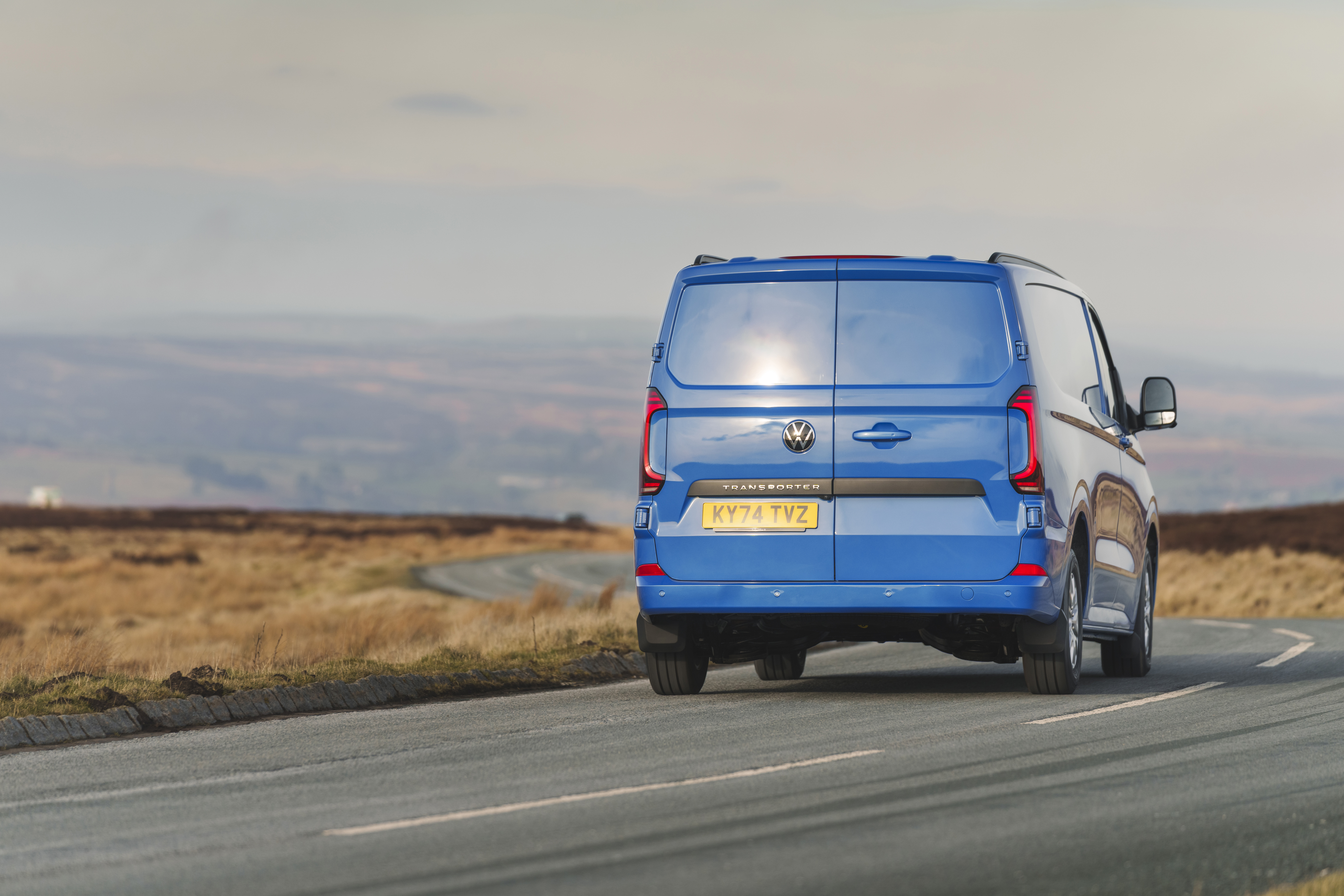
Happily, everything else about how the Transporter drives has had a suitable glow-up. Beloved as the last model was, there was only so much that VW could do to polish a two-decades old body shell.We won’t say it drives like a car – because it doesn’t – but this is one of the most car-like mid-sized vans you’re going to find. It rides comfortably, handles pretty keenly, and is surprisingly easy to place on the road in spite of its size.
The driving position is much-improved over the old Transporter too: particularly if you’re blessed in the height department. You now look forwards at the dash, rather than down upon it, and even with a fixed bulkhead behind the front seats there’s still plenty of leg room for the driver.
Refinement isn’t bad either, with that new eight-speed gearbox allowing the engine to settle into a quiet cruise. Road and wind noise are kept in check too – at least for a panel van – so the Transporter doesn’t make for a tiring companion on long journeys.
How does it look?

In truth, a bit like a Transit with a VW badge on the front. Volkswagen has tried their best, but park it up alongside the Ford – as you’re bound to at some point – and there will be no hiding the similarities.That’s not necessarily a bad thing: both this and the Transit are pretty handsome-looking, and in fact rather shapely as vans go. Dyed-in-the-wool Transporter fans might not be convinced, but there’s always the Multivan and ID Buzz to pick from instead.
Volkswagen is still offering an enormous – for a van – range of colour and trim options, too. There’s a grand total of seven choices of alloy wheel design, and a decent selection of shouty metallic colours too. Sadly, there’s no sporty or off-road editions on offer in this country, but it probably won’t be long before enterprising individuals are modifying this generation of van too.
What’s it like inside?
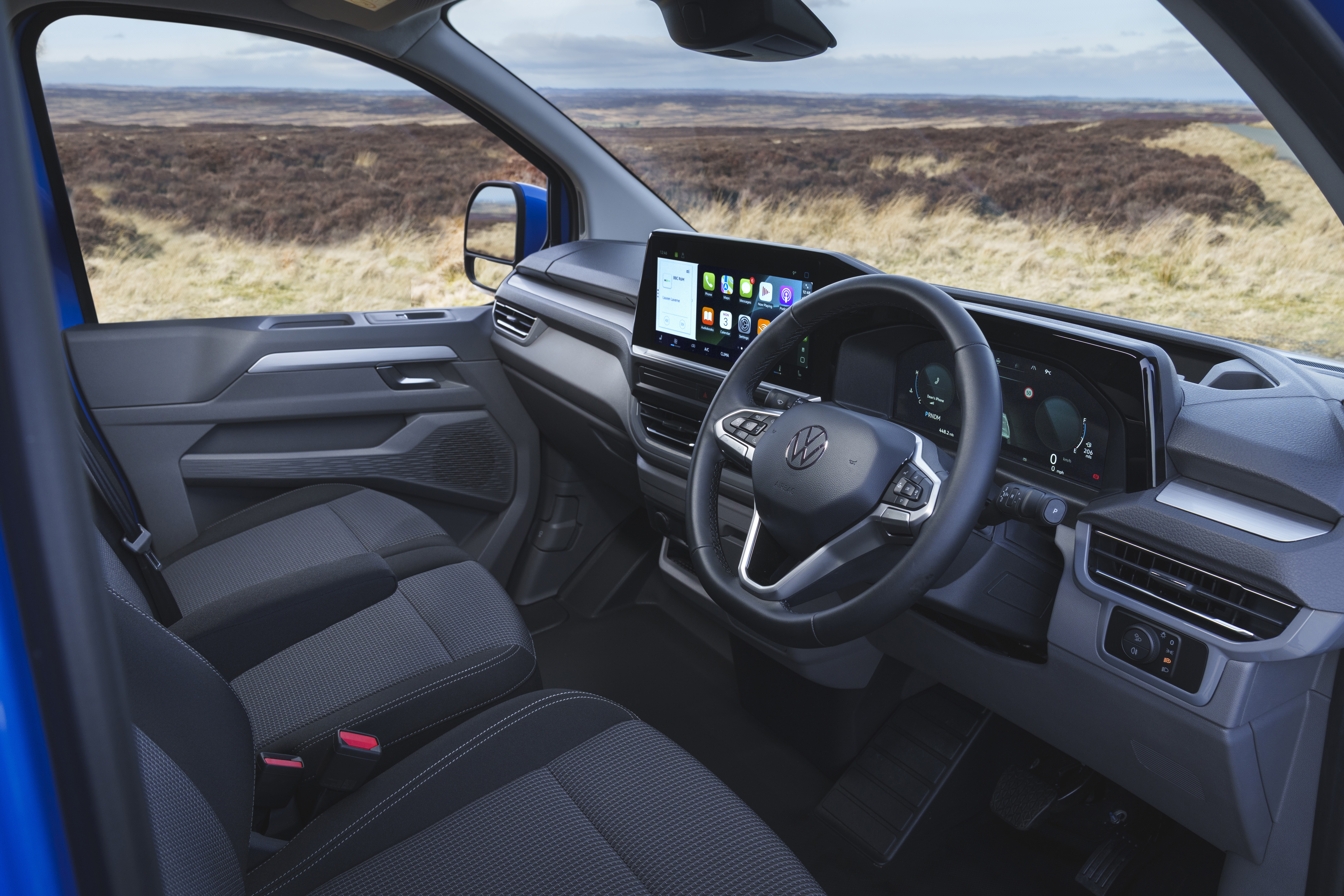
Surprisingly, not like a Transit. The Transporter gets – at first glance at least – a unique interior all to itself, complete with a proper Volkswagen steering wheel, stalks, and even a few bits of trim that wouldn’t look out of place in a Golf. Even the digital dials and infotainment are singing from the same hymn sheet, with the sort of graphics you’d recognise from the rest of the VW passenger car range.This does mean you miss out on the Transit’s handy steering-wheel-slash-table option, but at least you still get oodles of other practical storage spaces and surfaces dotted across the cabin. Provided you go for the automatic version, now complete with a column-mounted gear shifter, you’ll even have room for your centre passenger’s legs too.
Perhaps more importantly, load space is vast and considerably improved compared to the old model. There’s two body lengths available – a short or long wheelbase – but unlike some rivals, no high-roof option.
There’s the choice of regular panel van, ‘Kombi’ five or six seater, or a three-row eight seater minibus. As for the famous California camper van, you won’t find one based on this platform: it now uses the slightly smaller Multivan body instead.
What’s the spec like?
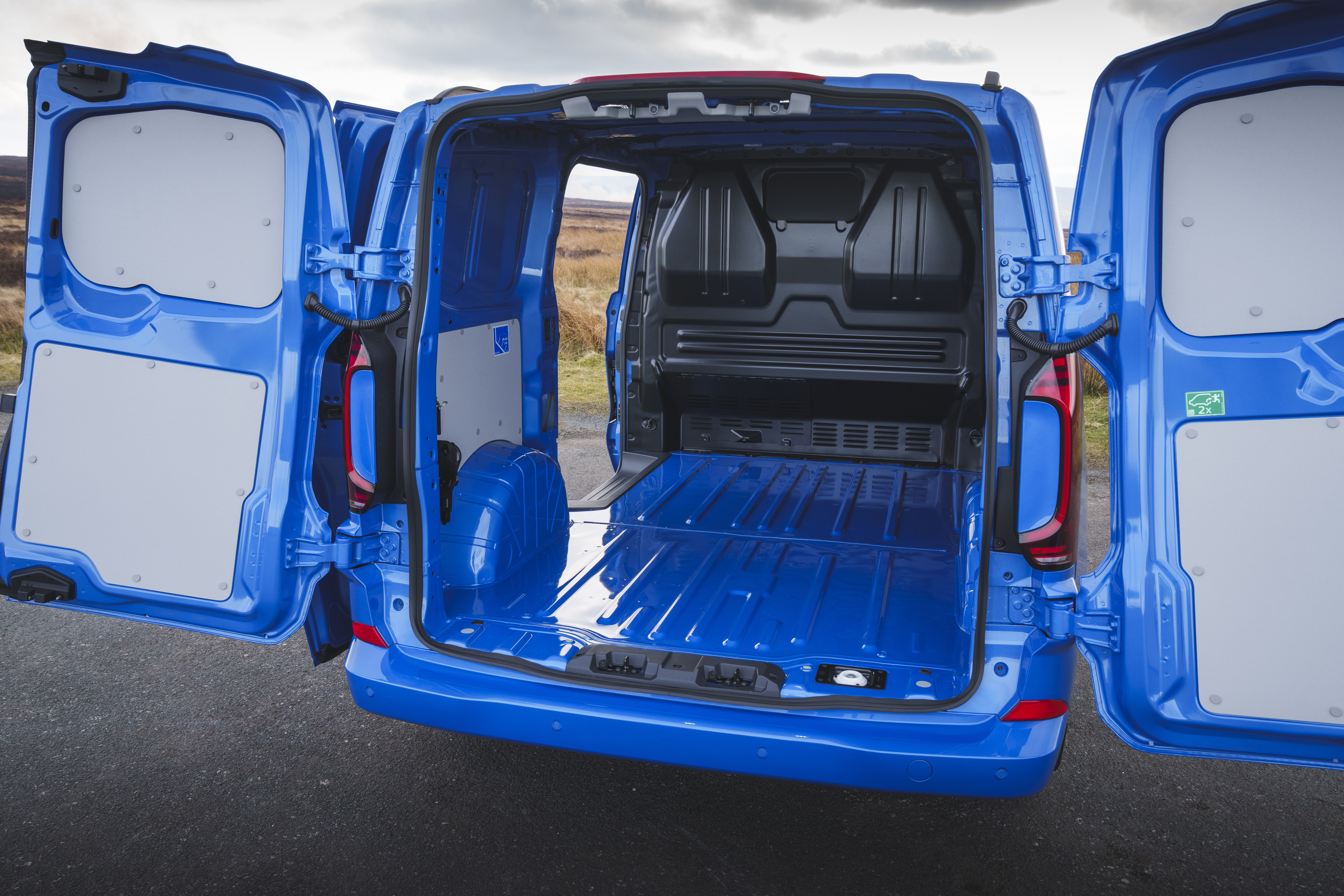
In-car (or rather in-van) tech is one of the biggest changes from the last generation Transporter. Out has gone the teeny touch screen of the old model, replaced with a 13-inch one that dominates the dashboard.As enormous touch screens go, it’s pretty good: logically laid out and with speedy responses. It’s standard across the entire Transporter range, complete with Apple CarPlay and Android Auto to boot.
The traditional dials in front of the driver have been binned too, replaced with a 12-inch digital screen. Again, it’s all pretty sensibly designed, and puts far more useful information in your eye-line than was possible before.
Less good are some of the usability quirks. Climate control settings are now within the touch screen’s remit, so you’ll be taking your eyes off the road rather a lot to stay warm or cool. Most trim levels don’t give you an ‘auto’ mode either, so you’ll be playing around with some very fiddly sliders to tweak temperature and fan speed manually.
That aside, a lot is bundled in as standard: air conditioning, rear parking sensors, cruise control, keyless start and 5G connectivity are all present on the base spec Transporter. Further up the range, you’ll find parking cameras, heated seats, adaptive cruise and even a wireless phone charger.
There’s also an enormous list of options to choose from, ranging from electric sliding rear doors to an off-road package, bigger fuel tank, 230 volt power socket and more.
Verdict
The old Transporter was never going to be an easy van to replace, which is why Volkswagen hung onto it for as long as possible. Objectively, this new version is a vast improvement in lots of ways: more modern, more spacious, and more comfortable too.
It has lost most of its predecessor’s charm, though that was almost inevitable no matter what VW had produced next.

